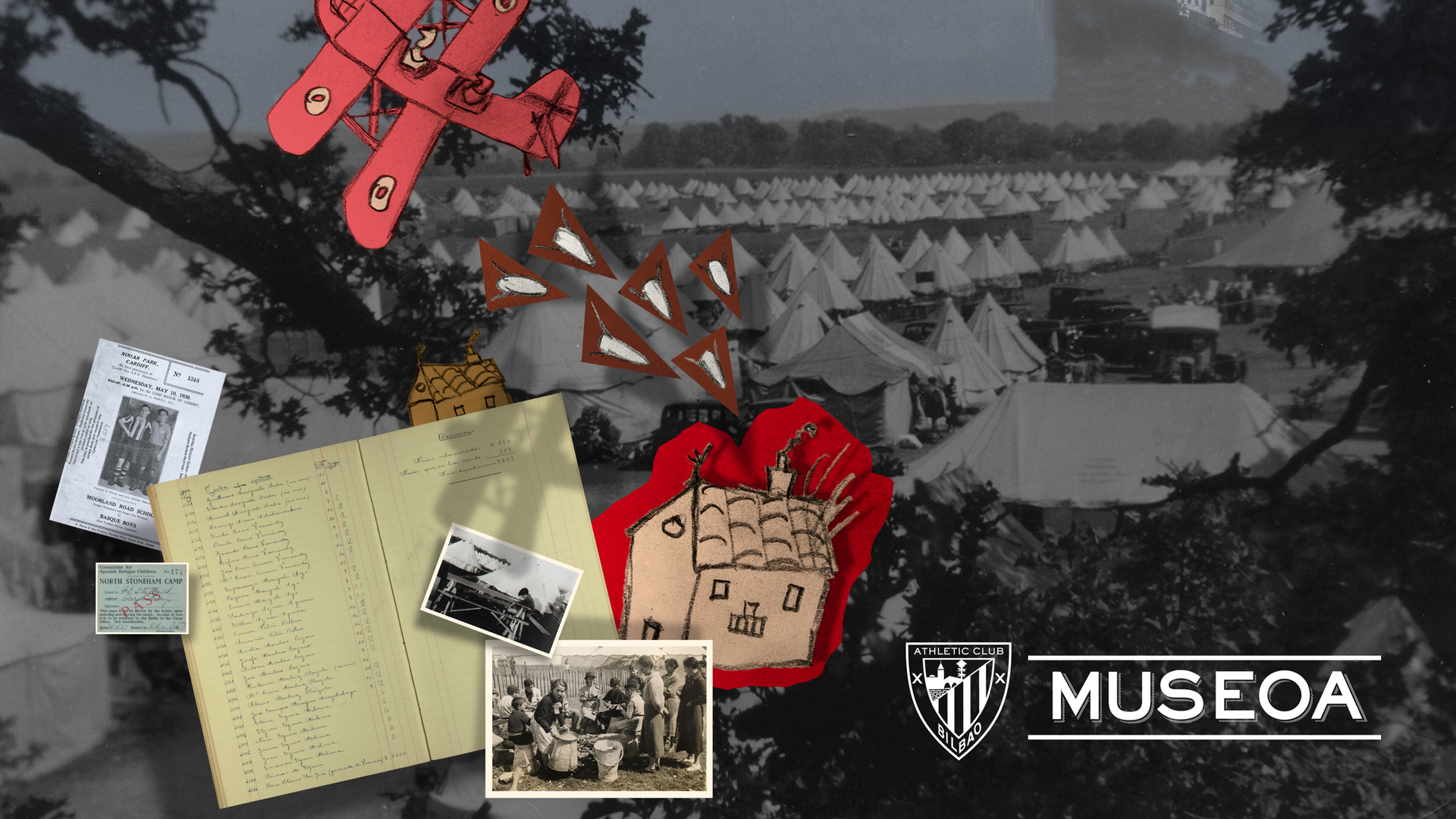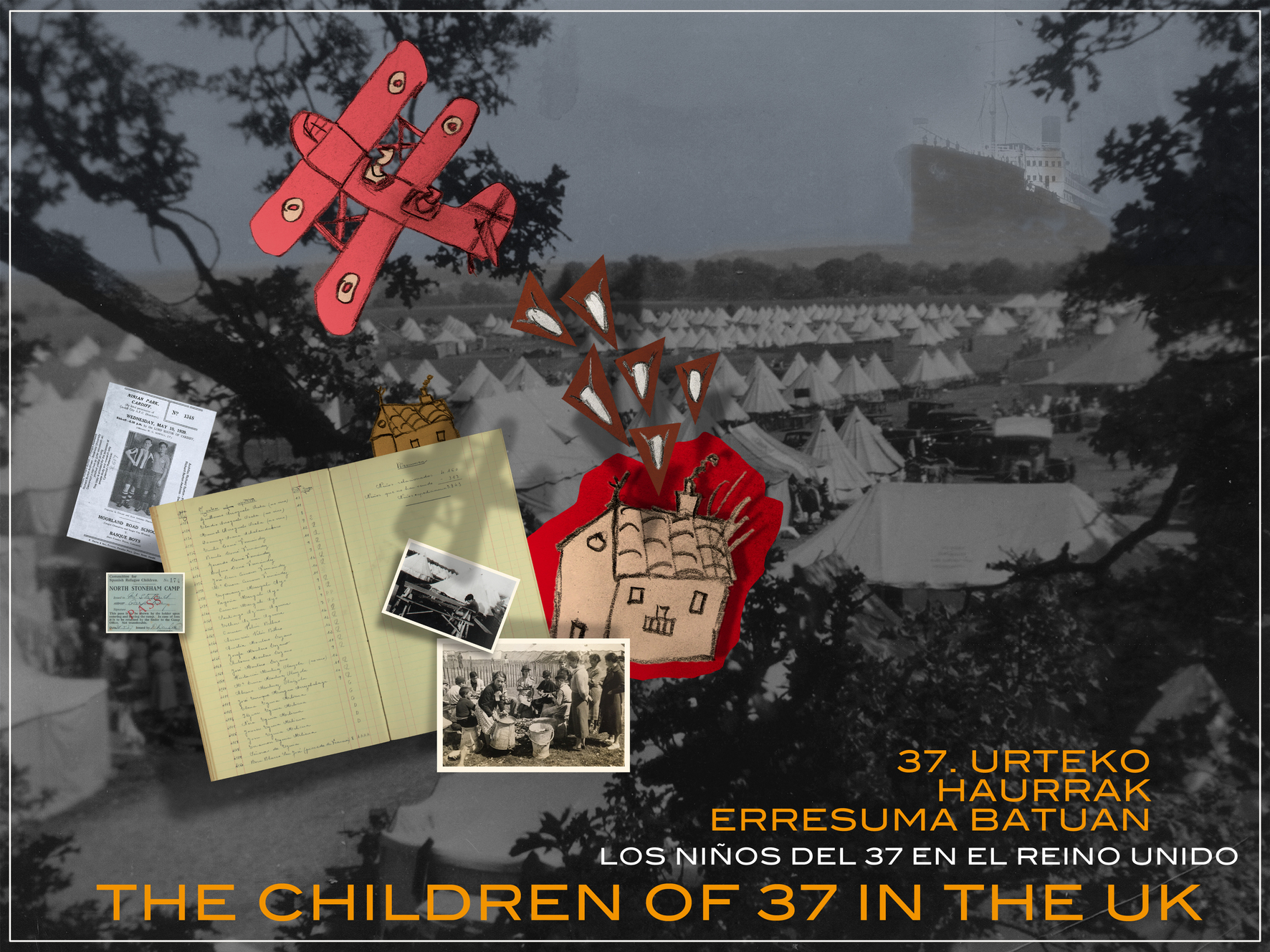
The AC Museum to open exhibition about “The Children of 37 in the UK”
The AC Museum to open exhibition about “The Children of 37 in the UK”
To mark the 85th anniversary of the bombing of Gernika, Athletic Club is opening an exhibition that explores the life and times of young Basque refugees who went on to compete at the highest level of football
On April 27, the Athletic Club Museum will unveil “The Children of 37 in the United Kingdom”, a temporary exhibition with a special focus on the evacuation of Basque children to the UK during the Spanish Civil War. In particular, it follows the extraordinary stories of the refugees that became professional footballers, such as Athletic Club players Emilio Aldekoa and Raimundo Lezama.
The exhibition is a collaboration between the AC Museum and BCA’37 UK and BCA’37 Euskadi (Basque Children’s Association of 1937 in the UK and the Basque Country), associations whose aim is to preserve the memory of the children who were evacuated in 1937.

The installation coincides with the 85th anniversary of the bombing of Gernika, which took place on 26 April 1937. The air raid led to the total destruction of the town and was part of a series of similar attacks that took place across Biscay during the Spanish Civil War. The conflict forced thousands of families to seek protection for their children, many of whom ended up as refugees in the United Kingdom. “The Children of 37 in the UK” is dedicated to the youngsters who arrived in Southampton aboard the SS Habana a month after the massacre of Gernika and went on to have careers as professional footballers.
This new exhibition follows on from others the AC Museum has organised in recent times, such as “100 years of the San Mamés scoreboard”, “Betetako ametsak” (about Athletic’s trophies) and “The Champions of the Euros”.
Gernika, the SS Habana and Stoneham Camp
On April 26, 1937, the small Basque town of Gernika experienced the first ever air raid to explicitly target a civilian population. With Franco’s approval, the German Condor Legion and the Italian Legionary Air Force dropped bombs on the town for three hours.
Frightened by the horrors experienced in Gernika, as well as in other towns such as Durango and Otxandio, thousands of families looked to protect their children by getting them as far away from the Basque Country as possible. To this end, 4,000 children boarded a repurposed cruise ship named the SS Habana, setting off on a 750-mile journey to the English port city of Southampton, where they arrived on May 23, 1937.
This was in fact the third of six journeys made by the Habana in May and June of ’37, the ship also made three journeys to La Pallice and two to Pauillac, both in western France, saving around 20,000 children in total. The youngsters who fled who become known as “Los Niños de la Guerra”, the Children of War.
“The Children of ’37 in the UK” exhibition focuses on the story of those evacuated to British soil. When the evacuees arrived at Southampton, they were sent to Stoneham Camp in Eastleigh before being moved on to homes (known as colonies) throughout the UK, where they were looked after by volunteers who had agreed to take in the children.
As is so often the case in times of sorrow, many of the refugees found solace in sport. All over the UK, from Southampton to Cardiff and up to Newcastle, as well as everywhere in between, young Basques could be found with a football at their feet.
Some of the lads, such as the Basque Boys AFC of Wales, became minor celebrities thanks to their footballing prowess, and a dozen or so others went on to play at an elite level in Great Britain and back home after the war ended, as was the case with Raimundo Lezama and Emilio Aldekoa, who made their respective Athletic debuts in 1942 and 1947.
Over the coming weeks before the official unveiling of the exhibition, we will publish a series of articles taking a deeper look at the lives and times of those Basque refugee footballers who became top-level footballers.